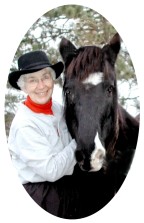Visiting Paris During Terrorist Attacks!
On the morning of the terrorist attacks in Paris, France, Amy Falink, a senior lecturer at the Carlson School of Management, University of Minnesota, and the daughter of Joyce Falink of Cannon Falls, was landing at the Charles De Gaulle airport.
She was taking a short vacation with a friend who was born in France. Amy’s experiences here are compiled from her entries on Facebook and in an interview.
Amy became aware of not only the tragedy of terrorist attacks but also of “some of the most welcoming, gracious and friendly people" she had ever encountered... which to her was "significant, in light of all that happened in the city.”
Amy’s journaling.
November 13: “Today we arrived in Paris. After landing at the Charles De Gaulle airport, (her friend) Patrice pointed out the Stade de France (stadium) and he explained proudly, it was the site where France defeated Brazil in the 1998 World Cup. Little did we know that in the evening the stadium would be the site of suicide bombings.
“The weather was beautiful... what you might imagine for a fall day in Paris. It gave a romantic backdrop to the charming streets with bakeries, flower shops and restaurants.
“In the evening, Patrice’s family picked us up from the hotel and in honor of my visit, they took us on a night tour of the traditional Parisian sites: Arc De Triomphe, the Eiffel Tower, the Champs Elysees.
“I didn’t know that within 30 minutes, this extraordinary city would be under attack by ISIS.”
Le Terrorisme.
While out for dinner, Amy recalled having received a travel alert on her phone that said: “several major incidents have been reported in Paris, France”. But she didn’t know what this meant and they continued with their dinner.
Then they saw a news report saying 13 were dead in a Paris attack. But they didn’t know what kind of attack it was. Then the numbers went up. Fifty dead. Seventy dead. More than a hundred dead.
Amy continued: “Tonight the city was under siege. We are safe but so sad for the many who were gunned down in this beautiful city. These acts of violence must end.”
She added, “Despite our proximity to the events that occurred, we were like anyone else, anywhere else in the world. We watched the events unfold on the news and social media.
“Like everyone, we felt very sad for those who were injured and for those who died. We felt really angry that people who were out enjoying a dinner or a concert and were victims of this senseless, brutal act. What terrible pain their families must feel. These people could be any one of us, in any part of the world.”
Staying safer...
November 14: “Today we stayed in the suburbs with family given the tense situation in Paris. Likely safer with military in Paris but we may err on the side of caution. This is an exceptional country and the people are so welcoming and gracious, even when gripped by the uncertainty of the last few days.
“French President Hollande had declared a state of emergency. What is a state of emergency, people were asking? While the US has what seems like perpetual states of emergencies since the War on Terror, it is uncommon in France - reportedly only two since WWII.
November 15: “The next morning the mood seemed different... tense. It became clear what had happened. People were glued to the news... 129 dead. There had been hostages in the Bataclan (theatre) and people gunned down in restaurants.”
Back to Paris...
November 16: “Before leaving France, we went back to Paris for a few days. Most attractions were still closed, which seemed to cause confusion for both citizens and tourists. There was conflicting information on websites and social media and we wandered around, trying to find open attractions.
“We decided to spend the day shopping on the main avenue, the Champs Elysses. There were many police officers and in each store there was tight security; they checked all bags upon entry.
“Later that evening we saw military troops at the Eiffel tower. The streets were full of people; however, the restaurants were not.
“On the bridges there were news crews and military troops. We went on a boat cruise on the Seine and saw doves that had been released from the Notre Dame Cathedral for those who died. It was really quite beautiful and meaningful.”
A little unnerving...
November 18: “Heading to the airport to return to the U.S. we were re-routed to the Charles De Gaulle Airport because of the seven-hour raid on another ISIS cell. When we got to the airport, there was no more police presence that we saw, than when we arrived in Paris.
“But it was a little unnerving when getting on an international flight when everyone was talking about bombs, terrorism. and airport threats!
Amy concluded: “Any inconvenience to our vacation pales in comparison to what happened to those innocent victims. At times you feel guilty for enjoying yourself in a city where people had recently suffered so much.
“Also, for years I had heard of the stereotype of rude French people who make fun of Americans. I never saw evidence of this.
“In fact, I found Parisians to be some of the most welcoming, gracious and friendly people I have encountered, which is significant in light of all that happened to their city. Each day, wherever I went, French citizens spoke English and they were incredibly helpful.
“I would readily return.”
.
.







